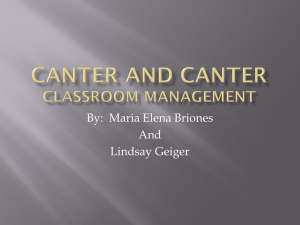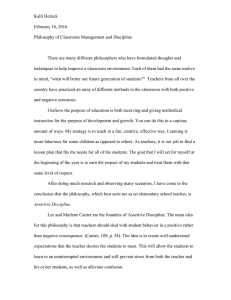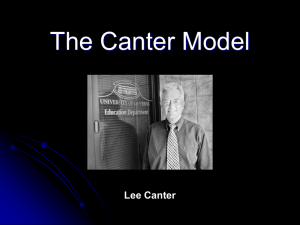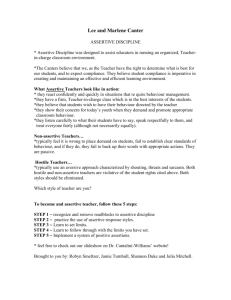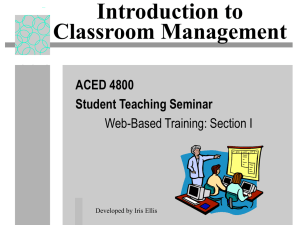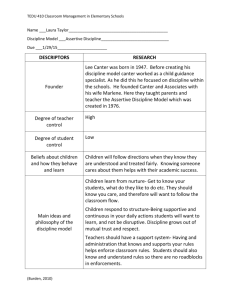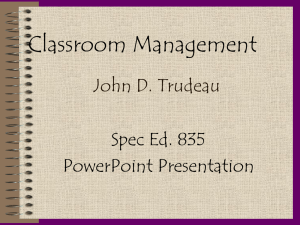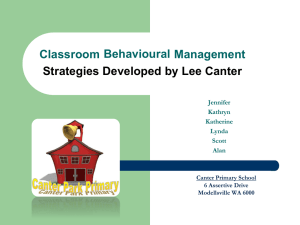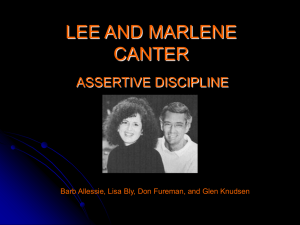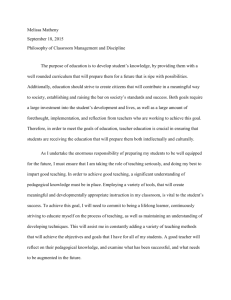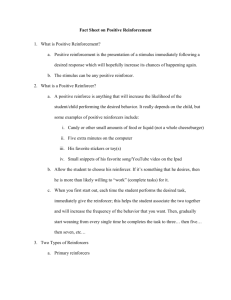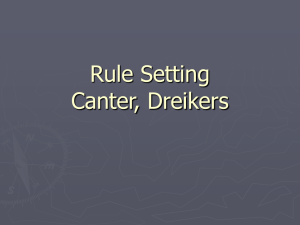CM: Chapter 3 - ClassroomMgmtMeuth
advertisement
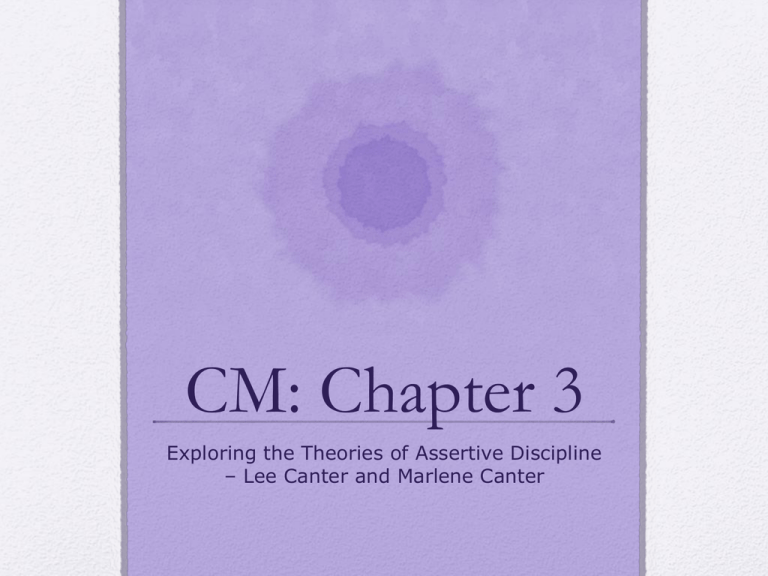
CM: Chapter 3 Exploring the Theories of Assertive Discipline – Lee Canter and Marlene Canter Key Concepts of Assertive Discipline • Rewards and punishments are effective. • Both teachers and students have rights. • Teachers create an optimal learning environment. • Teachers apply rules and enforce consequences consistently without bias or discrimination. • Teachers use a discipline hierarchy with the consequences appropriate for the grade level. • Teachers are assertive, not nonassertive or hostile. Response Styles • Nonassertive - “I’ve asked you repeatedly to stop talking, and you continue to do it. Please stop.” • Assertive - “Justin, that is your warning for leaning back in the chair. Put the chair down now or you will face a loss of classroom privileges.” • Hostile - “Put that comic book away or you’ll wish you had!” Different types of rewards: • Social reinforcers • Words – Smiles – Gestures • Graphic reinforcers • Star – Sticker – Checkmark • Activity reinforcers • Free time – Special game • Tangible reinforcers • Treat – Pencils and other supplies – Certificates Basic Rights of Students Students have the right to: • Have an optimal learning environment • Have teachers who help them reduce inappropriate behavior • Have teachers who provide appropriate support for appropriate behavior • Have teachers who do not violate the students’ best interests • Choose how to behave with the advance knowledge of the consequences that will consistently follow Basic Rights of Teachers Teachers have the right to: • Maintain an optimal learning environment • Expect appropriate behavior • Expect help from administrators and parents • Ensure students’ rights and responsibilities are met by a discipline plan that: • Clearly states expectations • Consistently applies the consequences • Does not violate the best interests of the students
